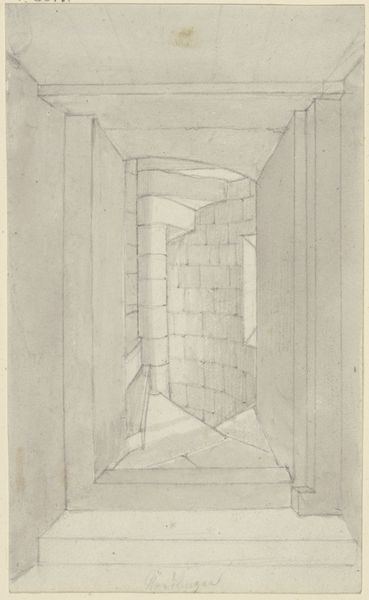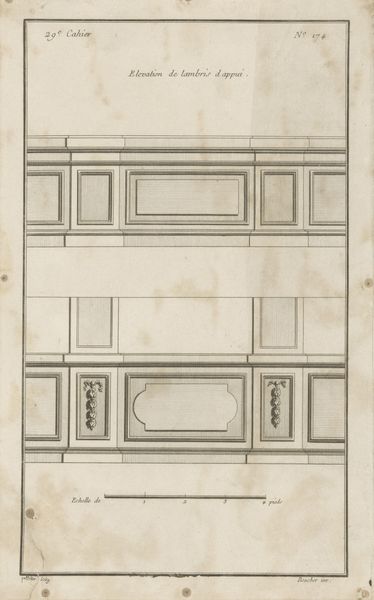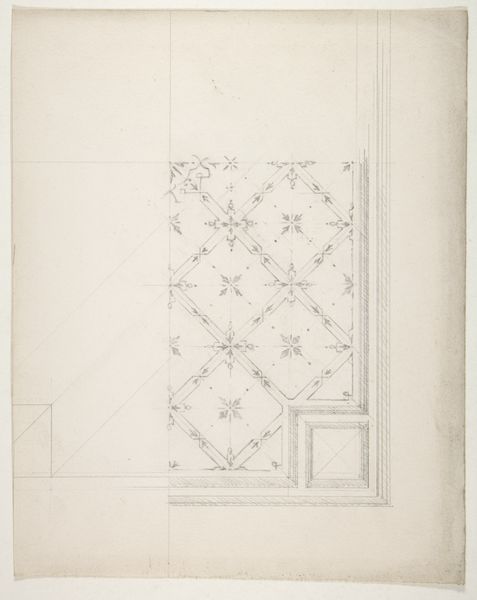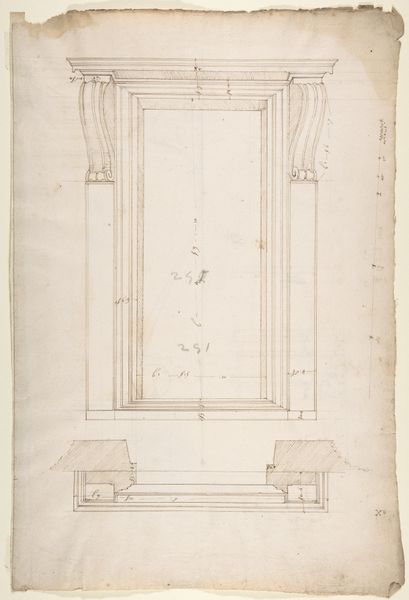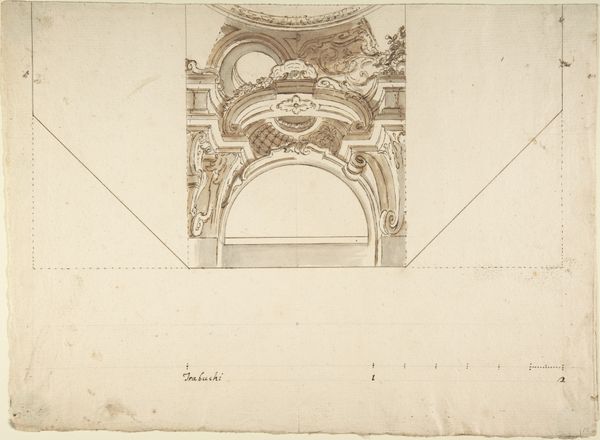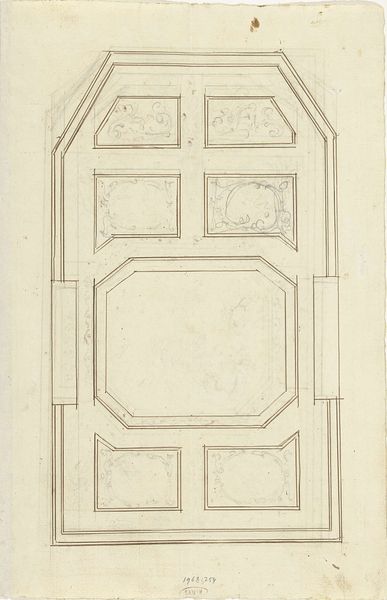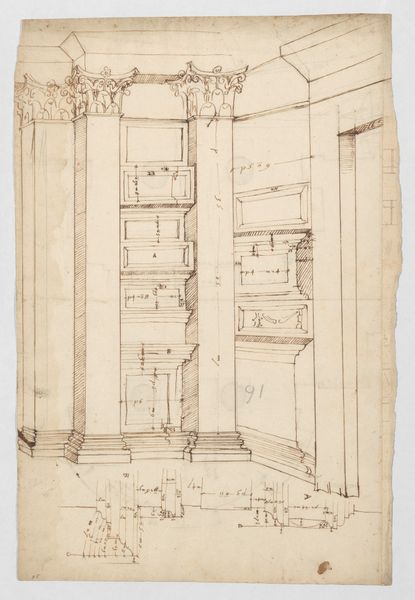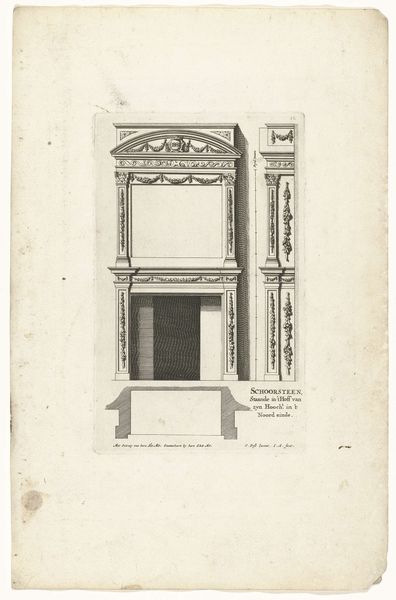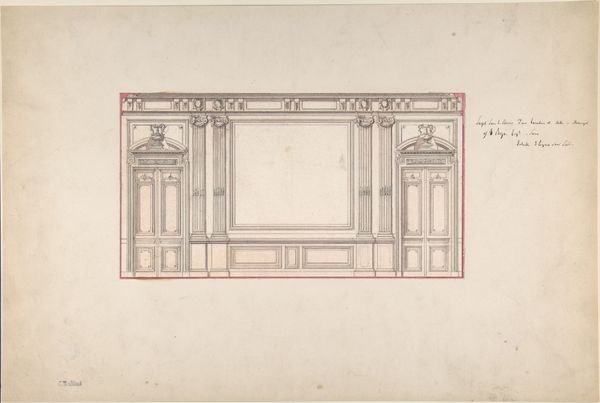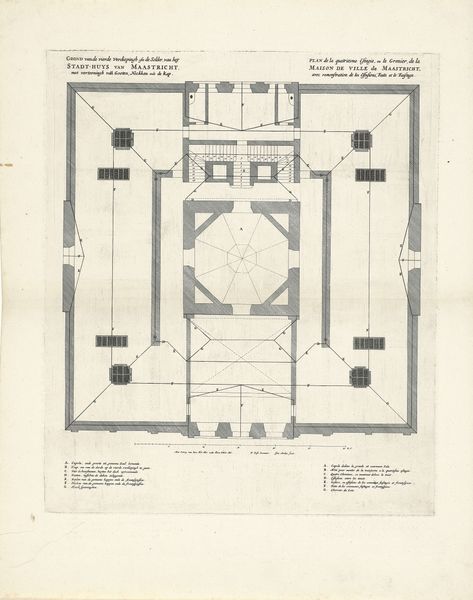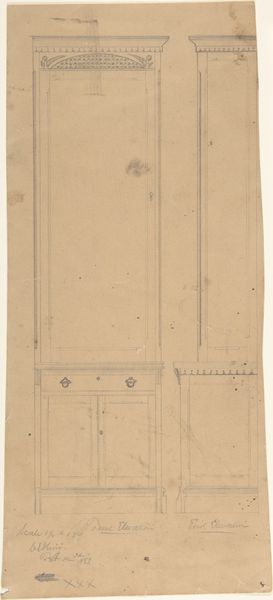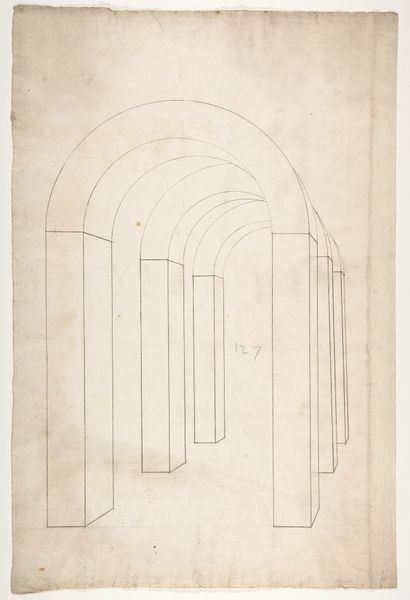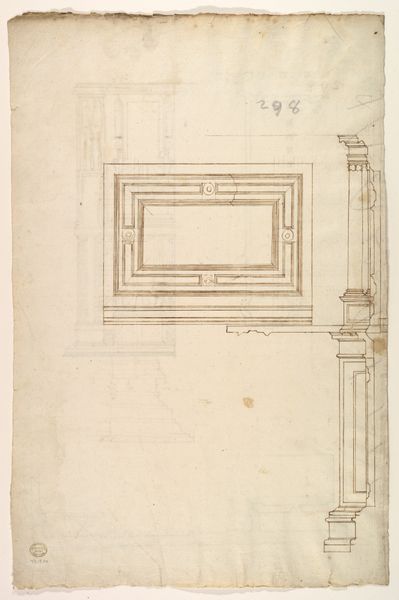
Architectural Drawing from Le livre d' Architecture, plate 68 from Woodcuts from Books of the XVI Century c. 1545 - 1937
0:00
0:00
drawing, print, etching, paper
#
architectural sketch
#
drawing
# print
#
etching
#
etching
#
perspective
#
paper
#
form
#
11_renaissance
#
geometric
#
architectural drawing
#
line
Dimensions: 283 × 199 mm (image); 367 × 249 mm (sheet)
Copyright: Public Domain
Editor: Here we have Sebastiano Serlio's architectural drawing from "Le livre d'Architecture," created around 1545, though this print is from 1937. It's primarily etching on paper, and the precision of the lines gives it such a stark, almost mathematical feel. What strikes you when you look at this? Curator: What I see is an attempt to codify architectural principles during a time of immense social and religious upheaval. The Renaissance was a period of rediscovering classical knowledge, but it was also a time of questioning established power structures. How does the architecture itself reflect this tension, do you think? Editor: I guess I hadn't considered the historical context so directly. I was mostly focused on the lines and shapes. Are you saying that even something as seemingly objective as an architectural drawing is somehow shaped by those social currents? Curator: Absolutely. The desire for order, the embrace of symmetry and proportion – these weren’t just aesthetic choices. They represented a worldview, a belief in the power of reason and a longing for stability in a changing world. Consider also who had access to such knowledge, who was being *excluded* from these refined principles? Editor: That's a perspective shift! It’s not just about form; it’s about power and access. Curator: Precisely. And Serlio's "Livre d'Architecture" aimed to disseminate these ideas more widely. In this context, how might we read the geometry here as a symbol of something larger, something about the intended organization of society? Editor: Now I'm seeing this drawing as less of a rigid plan and more as a political statement about social ideals of order and inclusivity, and also of control and exclusion. I wouldn't have thought of that on my own! Curator: It's about peeling back the layers to reveal the ideologies embedded within. I'm so glad this resonated with you.
Comments
No comments
Be the first to comment and join the conversation on the ultimate creative platform.
